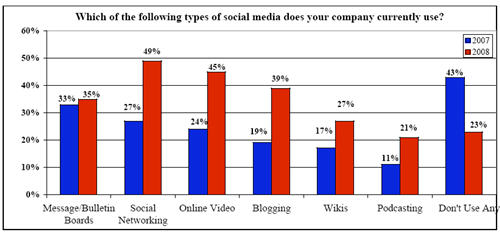Micro-blogging in the enterprise: an idea whose time has come?
Over the last few months there has been increasing discussion of how micro-blogging tools such as Twitter could be used in organizations.
Twitter is now frequently used in external communication, with organizations as diverse as @SouthwestAir, @Comcastcares, @BigPondTeam, @SEC_Investor_Ed, and @mosmancouncil using Twitter to communicate to stakeholders and for customer service. Given the rapid rise of Twitter and how influential comments can be, this clearly needs to be on the radar for any major organization.
However there are significant constraints in using public micro-blogging services such as Twitter, Jaiku, or identi.ca for internal communication. Even with the ability to protect people’s updates to being viewed only by approved followers, few organizations would like to have this kind of information hosted externally.
As such they often look at internal tools to see how yet another consumer technology can be adapted to create value for the enterprise.
At our Enterprise 2.0 Executive Forum in February, Australian pharmaceutical company Janssen-Cilag described how it was implementing an internal version of Twitter.

